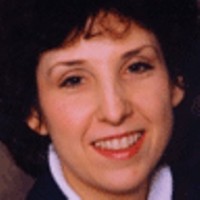Executives of two property/casualty insurance organizations—Kinsale Insurance and the U.S. P/C operations of Arch Capital—shared their recipes for success with an analyst who crowned their companies as performance leaders during a recent industry webinar.
The short takes:
We don’t outsource underwriting, said Michael Kehoe, chief executive officer of Kinsale Insurance Company.
We manage insurance cycles, said Matthew Shulman, CEO of Arch Insurance North America.
During the webinar in early July, Tim Zawacki, insurance sector strategist for S&P Global Market Intelligence, and Terry Leone, manager of financial institutions research for S&P GMI, described how the researchers develop an annual ranking of the 100-largest U.S. P/C carriers based on key performance metrics gauging superiority of rates of return, underwriting profitability, balance sheet growth and other indicators of success. Then Zawacki turned to the two executives to get their assessments of exactly what they thought it took for their companies to garner the top two ranking spots.
Kehoe highlighted Kinsale’s underwriting and expense advantages in the excess and surplus lines market, noting that not only does the insurer focus exclusively on E&S business but also that its E&S focus is on small accounts with an average premium of roughly $15,000. “We don’t outsource the underwriting,” he said, noting that given the huge challenge for insurance companies to administer books of small-account business, others outsource the underwriting to program administrators and managing general agents.
“At Kinsale, we don’t.”
“We had almost three quarters of a million new business submissions in 2023. We sent out almost half a million new business quotes. It’s a very high volume of transactions,” he reported.
“We feel like that’s our core competency. We want to handle that directly. We think that allows us to be more accurate in the underwriting process.”
In addition, he continued, “It allows us to undertake a perpetual process of trying to improve how we segment and price risk. You write business, you analyze the results, you disaggregate those results by account size, by class of business, by venue—a million different ways, looking for smarter ways to price the risk.”
Controlling the underwriting activity within Kinsale also allows the company to offer a very broad risk appetite to brokers, Kehoe suggests. “When you outsource underwriting to your brokers, you almost have to introduce some degree of rigidity to the underwriting guidelines.”
“We’ve carved out an interesting niche in writing not just E&S business, but within the E&S spectrum, a harder-to-place account,” the CEO stated.
Turning to expenses, Kehoe noted that Kinsale has a “tech-driven, low-cost approach to the business”—a competitive advantage that emerged from having a fresh look at technology and business process automation as a de novo startup 15 years ago. Kinsale’s expense ratio lands in the low 20s as a result, he said, estimating competitor expense ratios at well into the 30s and higher.
Shulman explained that Arch Capital operates in three segments: insurance, reinsurance and mortgage insurance. More than 10-times bigger than Kinsale, with $18 billion in gross written premiums across the enterprise in 2023 (roughly $8 billion in insurance), Shulman said Arch is especially adept at allocating capital to areas of greatest opportunity. “During the years when the P/C market was more soft, more capital was allocated to the mortgage segment where the returns were exceptional. In more recent hard-market years, more capital is being allocated to P/C insurance and reinsurance,” he said.
“Specific to insurance in North America, we’ve always had a meaningful focus on managing insurance cycles,” the insurance operations leader said.
That focus is often articulated by Arch Capital Group’s CEO Marc Grandisson on quarterly earnings conference calls, who notes that the keen attention to cycles dates back to the company’s founding. During a recent call, Grandisson invited analysts to download a diagram of an insurance clock to help them follow the trajectory of the hard market, noting that the clock-view of the cycle’s ups and downs was created by Paul Ingrey, an Arch Capital founder, back when Ingrey was at F&G Re in 1985.
During the S&P webinar, Shulman said that the recent success of Arch Capital’s insurance business dates back to actions taken during the 2015-2018 time frame, which eventually “turned out to be the peak of the soft market. [Those are] years that have developed really unfavorably.”
“We were very disciplined during those years where we weren’t happy with the pricing in a lot of product lines. We didn’t grow during that time period—even shrunk in certain areas.”
“That discipline really positioned us well to lean into the hardened P/C market starting in 2020,” he reported. “We always try to really have an eye toward not just reacting to current market conditions but managing cycles and looking a couple of years ahead as to where we think the market’s going.“
Shulman said that, like Kinsale, there’s a focus on maintaining a strong underwriting culture at Arch. “One thing that has always meant at Arch is not going along with the rest of the marketplace. Often our view is a little bit contrarian, a little bit challenging [of] the status quo.”
“We sometimes like to look for where solutions are needed—where there are shortages in capacity, where our brokers and customers are telling us they need help and they need solutions. And I think that really helped us lean into the hard market,” he continued, providing an example of the cyber market.
“Pre-2020, we really were a very small player in cyber, and when that marketplace really hardened and capacity pulled out, we moved [in]—hired underwriters, hired network security engineers, really leaned into it because there was a market demand.”
Today, Arch is a top 10 writer of cyber, Shulman reported.
Like Shulman, Kehoe also had an illustration of the benefits of his firm’s internal underwriting culture in response to a question posed by S&P GMI’s Zawacki about whether Kehoe thought the rapidly growing MGA space was becoming overheated.
“There is a lot of inaccuracy” in the underwriting E&S business—which often inures to the detriment of the risk bearer, said Kehoe, providing an example of a very large products liability account that Kinsale lost. “It was a firearms manufacturer. We quoted, I think it was $170,000 renewal premium. We lost that to someone who wrote it for $57,000 by misclassifying it as a sporting goods distributor.”
“That creates an issue around mispricing the risk, but it creates an even larger issue around how do you manage profitability if you don’t have an accurate understanding of what you’re insuring,” he said.
As for Zawicki’s question about an overheated MGA market, “Yes is the short answer,” Kehoe said. There are MGAs in the marketplace that have been in business 30 years and do a remarkably good job within their specific areas. I want to acknowledge that upfront. But the follow-on is that when you outsource underwriting to commissioned salespeople, you do create a misalignment of interests. And there are some delegated underwriting arrangements that are not consistent with disciplined underwriting,” he said.
Kehoe reported that there used to be a handful of companies in the fronting business and now there are closer to 30, also noting that a wholesale broker he recently spoke to reported working with 750 different MGAs (excluding their own).
“There are definitely some very quality operators there, but there’s definitely some pitfalls. And I think the rapid expansion could be an argument for a little bit more longevity to the hard market if there is a contraction there in the future,” he concluded.
Shulman said that delegated authorities have always been a big part of Arch’s story in the P/C insurance space—both admitted programs and some E&S programs—including financial lines, professional lines, travel and A&H business. “There are certainly a number of pockets of the delegated authority world that we’ve taken advantage of. So, it’s an opportunity, but I think it’s an opportunity where you really partner with the MGAs and administrators who can be an extension of your company… They provide some kind of specialized underwriting or specialized distribution access, but that relationship is really close and tight, and you really are treating that MGA like they are one of your underwriting teams—and they’re treating you like it’s their own capital. That creates a great opportunity,” Shulman said.
On the other hand, for “any carrier that’s just looking to hand over the pen for additional volume and check[s] back in with that MGA in a year [to] see what they wrote, there’s a lot of risk there.”
Noting the large number of startups in the MGA space today, Shulman said, “It feels like now there’s a flight to quality to experienced MGAs.”
Bottom line: “That part of the industry can’t be ignored,” he said, citing recent estimates putting the size of the U.S. MGA market at about $80 billion in annual premiums. For carriers, “there are both opportunities and risks there for sure,” he said.
Topics Underwriting Insurance Wholesale
Was this article valuable?
Here are more articles you may enjoy.



 Senators Launch Probe Into Demotech’s Ratings in Florida
Senators Launch Probe Into Demotech’s Ratings in Florida  CEO Sentenced in Miami to 15 Years in One of the Largest Health Care Fraud Cases
CEO Sentenced in Miami to 15 Years in One of the Largest Health Care Fraud Cases  Louvre Tightens Security After $102M Jewel Heist, Installs Bars on Infamous Window
Louvre Tightens Security After $102M Jewel Heist, Installs Bars on Infamous Window  Grand Jury Declines to Indict Man in Fatal Shooting at Kentucky State University
Grand Jury Declines to Indict Man in Fatal Shooting at Kentucky State University 


